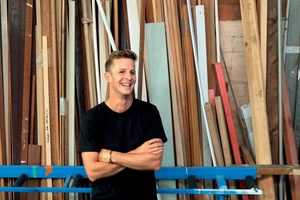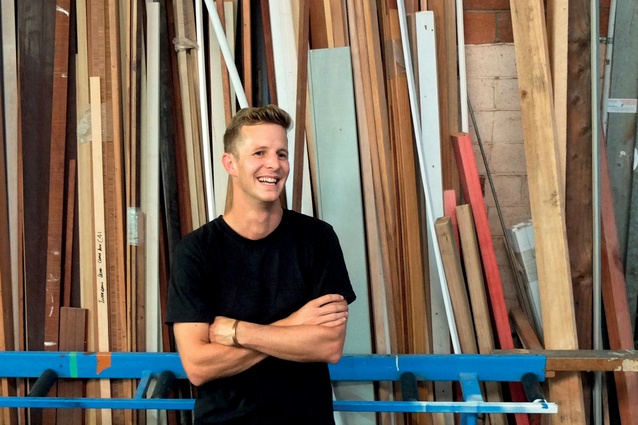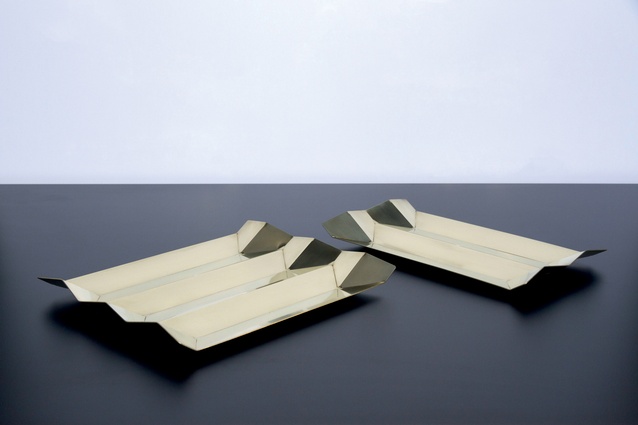Riley Sanders: Designer & craftsman
Houses: Where does your interest in design come from?
Riley Sanders: A love of materials and a fascination with manufacturing processes. For me it’s all about how they can work together to create everyday objects of desire.
Houses: Your designs have a minimal aesthetic; do you find that form and function are best expressed this way?

RS: I appreciate designs where I find myself asking, “Oh man, why didn’t I think of that?” Sometimes the result seems so simple, however on closer inspection that’s often not the case. Creating designs with a minimal aesthetic is the result of a lot of development, stripping back an idea to its bare essentials so that the object is clear in its message. The road to achieving this is not always simple, but that’s what is so fascinating about the design process.
Houses: Do you have a preferred set of materials to work with?
RS: Hardwoods are great to work with. There is something special about how they can transform so much from their raw state to a final piece. They always amaze me with their grains, each length with its own unique look and character. However, for me, it’s often the processes that are more exciting than the material itself. Experimenting with different ways to transform materials and create objects is what often inspires my products. It was through molding faceted concrete tiles, for example, that inspired the form for the Valley tray.
Houses: How much of a role does digital technology play in the design/fabrication of your work?
RS: A lot. It is always exciting to stumble upon new processes when developing a design. From fiber optic lasers cutting through sheets of brass or CNC routers machining details in wood – having an understanding of digital technologies is essential as a designer. It not only helps to make manufacturing more efficient but also has the potential to inspire new ways of working with materials and creating objects. This, however, must always be balanced with craft. I am a designer but also a maker and it is the hands-on crafting that is often the most rewarding.
Houses: Who are your design mentors/heroes?
RS: New Zealand has developed its own unique design aesthetic over the years with ideas that are smart yet simple and which stay true to the materials and processes used. We are at a stage where we are being recognised on the world stage and it is exciting to be a part of that. We are lucky to have a bunch of super talented designers in this clever country to inspire us. Resident and Well-Groomed Fox are great examples of this. Not to mention the guys at Y.S. Collective, who are pumping out some really innovative stuff.
Riley Sander’s Regent Street website here.












